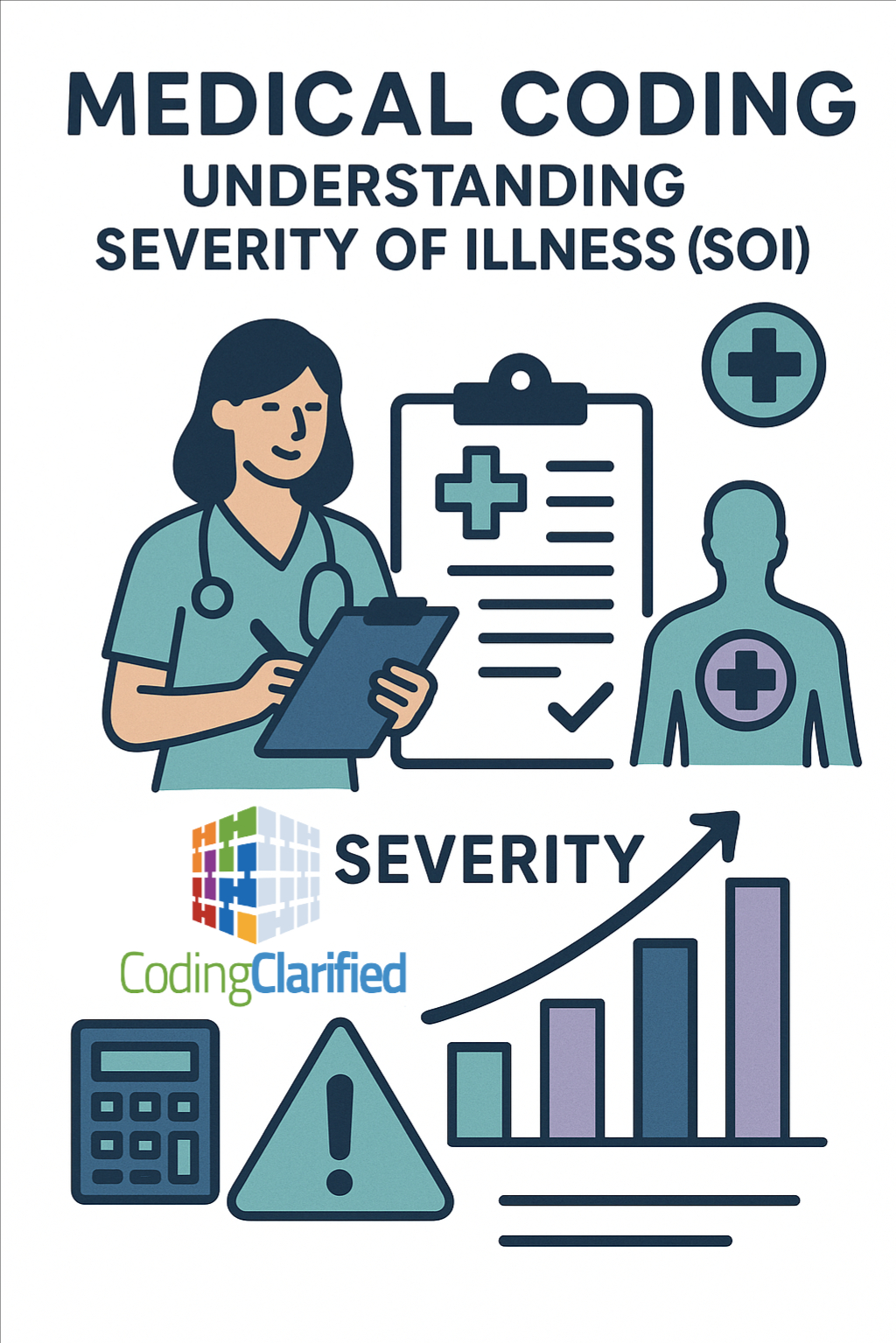What is Severity of Illness (SOI)?
Severity of Illness (SOI) in medical coding is a classification system used in healthcare reporting that measures the extent of a patient’s illness. It reflects how sick the patient is and how much hospital resources may be required for their care. SOI is especially important in risk adjustment, quality reporting, and reimbursement models, as it provides a standardized way to compare patients with similar conditions.
The SOI scale is typically divided into four levels:
- Minor – Minimal impact on health, straightforward treatment.
- Moderate – Noticeable impact on health requiring more monitoring and interventions.
- Major – Serious illness with high risk of complications.
- Extreme – Life-threatening or complex conditions requiring intensive care.
Why is SOI Important in Coding?
Accurate coding of SOI directly impacts:
- Reimbursement: Payers often use SOI data in determining hospital payments, especially under Diagnosis Related Groups (DRGs).
- Quality Metrics: SOI helps hospitals compare outcomes fairly, since higher SOI patients are expected to have more complications.
- Risk Adjustment: SOI supports fair evaluation of hospital and provider performance by adjusting for patient complexity.
- Resource Planning: Hospitals use SOI data to allocate staff, beds, and services appropriately.
SOI and DRG/APR-DRG
The All Patient Refined Diagnosis Related Groups (APR-DRG) system incorporates SOI into its grouping logic. Each patient encounter is assigned a base DRG, but SOI (along with Risk of Mortality, or ROM) further refines that classification.
For example:
- A patient with pneumonia and no complications may have an SOI of Minor.
- A patient with pneumonia, sepsis, and respiratory failure may be classified as Extreme SOI.
These differences significantly affect hospital reimbursement and reporting.
Medical Coding and DRG’s https://codingclarified.com/medical-coding-and-drgs/
Coding Tips for SOI
- Capture All Comorbidities (CCs) and Major Complications (MCCs):
These secondary diagnoses often increase SOI levels. Omitting them can lead to underreporting. - Ensure Clinical Validation:
Always confirm that the documented conditions meet coding and clinical criteria (e.g., sepsis vs. SIRS). - Review Provider Documentation:
Precise wording is critical. For example, “acute on chronic heart failure” may elevate SOI compared to just “heart failure.” - Use Coding Clinic Guidance:
Follow official guidelines for coding conditions that influence SOI, especially when multiple comorbidities are present.
Real-World Example
- Case 1: A patient admitted for chronic obstructive pulmonary disease (COPD) exacerbation, treated with oxygen and steroids, without complications → Moderate SOI.
- Case 2: A patient admitted for COPD exacerbation with pneumonia and acute respiratory failure requiring intubation → Extreme SOI.
The difference lies in coding all secondary diagnoses and capturing the severity of complications.
Key Takeaway
Severity of Illness (SOI) is more than just a hospital reporting tool—it’s a reflection of patient acuity, a driver of reimbursement, and a measure of coding accuracy. Coders play a vital role in ensuring SOI is reported correctly by capturing every clinically supported diagnosis. Accurate SOI coding supports fair hospital benchmarking, optimized payment, and reliable patient outcome data.
The Severity of Illness Index as a severity adjustment to diagnosis-related groups https://pmc.ncbi.nlm.nih.gov/articles/PMC4195109/

